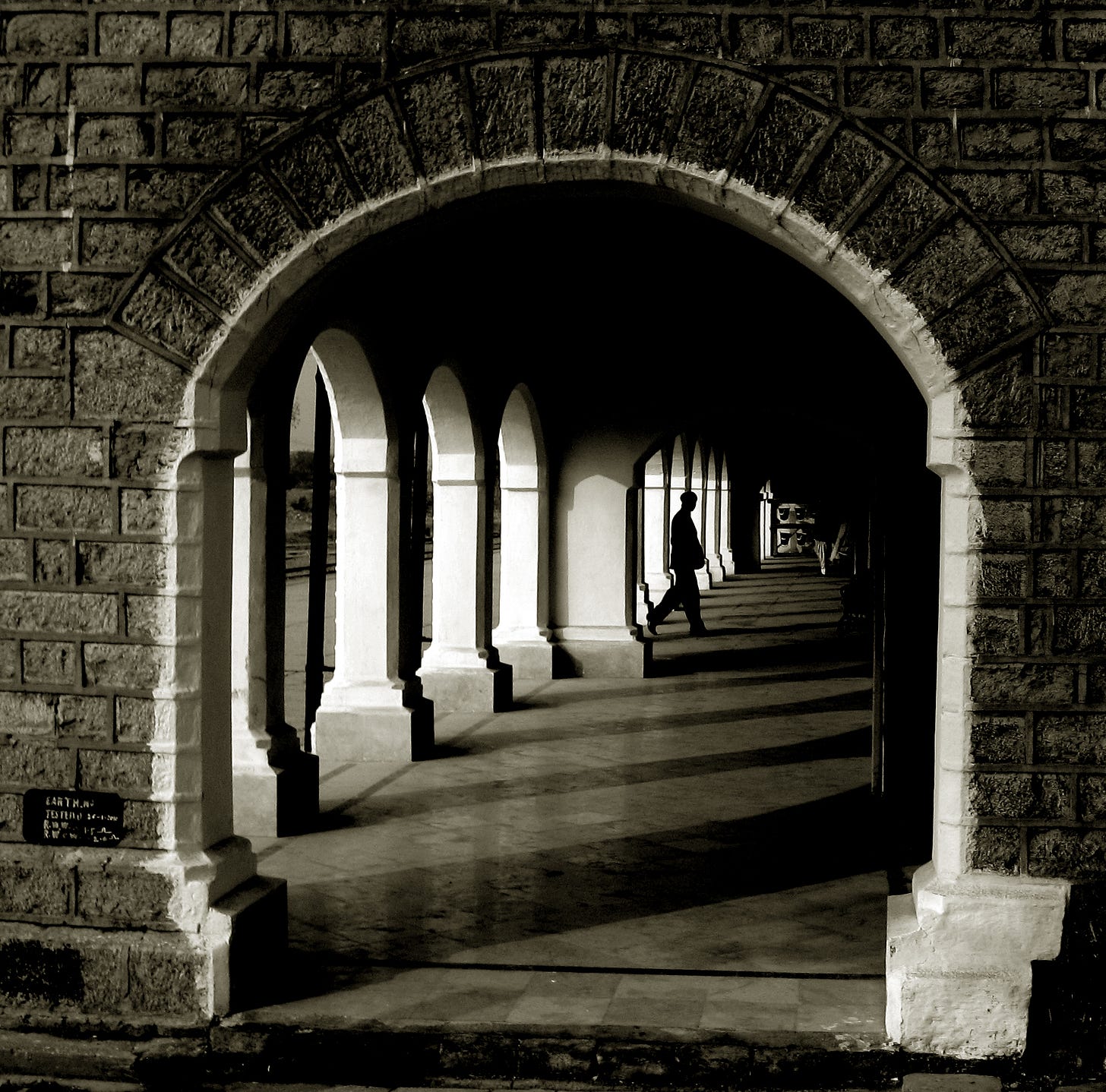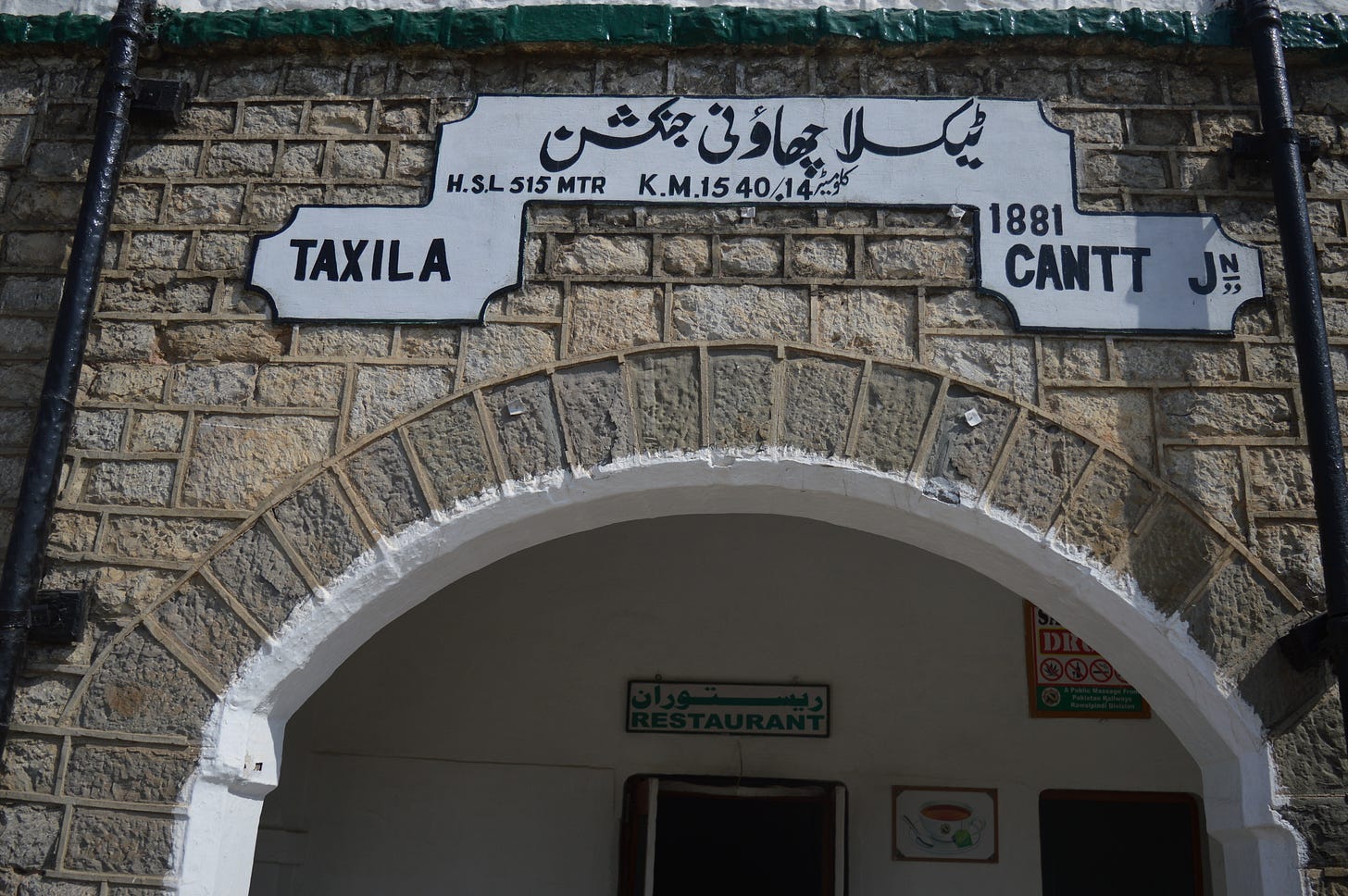75 Years of Partition: Revisiting Taxila Station, where the Massacres first began
Words by Saif Tahir
Welcome to the Brown History Newsletter. If you’re enjoying this labour of love, please do consider becoming a paid subscriber. Your contribution would help pay the writers and illustrators and support this weekly publication. If you like to submit a writing piece, please send me a pitch by email at brownhistory1947@gmail.com. Check out our Shop and our Podcast. You can also follow us on Instagram and Twitter.
75 Years of Partition: Revisiting Taxila Station, where the Massacres first began by Saif Tahir
For dwellers of Rawalpindi and Islamabad seeking respite from the scorching heat, the road adjoining GT road bypass to the city of Taxila offers a scenic treat. Lush green orchards, local craft shops, and the picturesque Khanpur lake; this small road also includes heritage sites of Takshashila, a 1000 BCE city named in honour of Taksha, the son of Rama’s half-brother and Ayudhiya’s King Bharata. As you proceed further, a left turn before the Taxila museum reveals an old colonial structure with an iron shed connected to a police picket indicating a railway station. An iron plate on the crumbling black door of the picket has a name written on top, ‘Taxila Cantt Junction.’ This quiet colonial relic once connected the whole area to the rest of the subcontinent during the British Raj. The main building’s old facade, covered in fresh paint, still holds memories of a bygone era as well as the the years since Independence, which includes the scars and wounds from Partition.
While many criticize its deplorable conditions, Taxila Cannt Junction once held the key to exodus for many during the Partition of 1947. However, it is also the site from where the massacres of 1947 are considered to be first set off from and went on to spread and take the lives of millions from both sides.

Railways: Personifying horrors of Partition
Trains and railway stations are a common symbol in stories and images of Partition. In literature, the Indo-Pak Independence is hardly ever discussed without mentioning the "ghost trains” that travelled across newly established borders. First established in the 1850s by the British, the railway system in the subcontinent still holds on to its colonial legacy, in forms of Victorian façades, arches, wide courtyards, and furniture engraved in bold letters that read, “ NWR” (North-West Railways). Because trains were the preferred mode of transportation at that time of Partition, it ended up becoming a symbol for a Promised Land. Some of those who survived the bloodshed passed on their horrific stories to future generations. Amongst the tattered souls was Hameed Ali Shah from Ferozepur (present day India) who had witnessed the death of his whole family on a train to Pakistan. Starting life as a child in the unfamiliar city of Rawalpindi, the haunting memories of the train journey still haunt him. Recalling our last conversations, he mentioned the insanity that emerged on both sides, as if different religious groups were competing against each other to see who can have the most bloodshed on a moving train.



